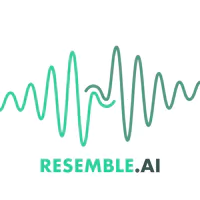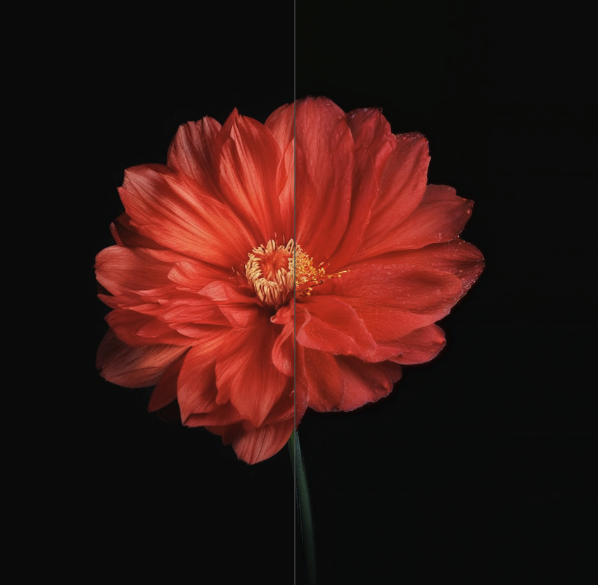resemble-enhance
Maintainer: lucataco

9

| Property | Value |
|---|---|
| Run this model | Run on Replicate |
| API spec | View on Replicate |
| Github link | View on Github |
| Paper link | No paper link provided |
Create account to get full access
Model overview
The resemble-enhance model is an AI-driven audio enhancement tool powered by Resemble AI. It aims to improve the overall quality of speech by performing denoising and enhancement. The model consists of two modules: a denoiser that separates speech from noisy audio, and an enhancer that further boosts the perceptual audio quality by restoring distortions and extending the audio bandwidth. The models are trained on high-quality 44.1kHz speech data to ensure the enhancement of speech with high quality.
Model inputs and outputs
The resemble-enhance model takes an input audio file and several configurable parameters to control the enhancement process. The output is an enhanced version of the input audio file.
Inputs
- input_audio: Input audio file
- solver: Solver to use (default is Midpoint)
- denoise_flag: Flag to denoise the audio (default is false)
- prior_temperature: CFM Prior temperature to use (default is 0.5)
- number_function_evaluations: CFM Number of function evaluations to use (default is 64)
Outputs
- Output: Enhanced audio file(s)
Capabilities
The resemble-enhance model can improve the overall quality of speech by removing noise and enhancing the audio. It can be used to enhance audio recordings with background noise, such as street noise or music, as well as improve the quality of archived speech recordings.
What can I use it for?
The resemble-enhance model can be used in a variety of applications where high-quality audio is required, such as podcasting, voice-over work, or video production. It can also be used to enhance the audio quality of remote meetings or video calls, or to improve the listening experience for people with hearing impairments. Additionally, the model can be used to enhance the audio quality of archived recordings, such as old interviews or lectures.
Things to try
One interesting thing to try with the resemble-enhance model is to experiment with the different configuration parameters, such as the solver, the prior temperature, and the number of function evaluations. By adjusting these parameters, you can fine-tune the enhancement process to achieve the best results for your specific use case.
This summary was produced with help from an AI and may contain inaccuracies - check out the links to read the original source documents!
Related Models

img-and-audio2video

7
The img-and-audio2video model is a custom AI model that allows you to combine an image and an audio file to create a video clip. This model, created by the maintainer lucataco, is packaged as a Cog model, which makes it easy to run as a standard container. This model is similar to other models like ms-img2vid, video-crafter, and vid2densepose, all of which are also created by lucataco and focused on generating or manipulating video content. Model inputs and outputs The img-and-audio2video model takes two inputs: an image file and an audio file. The image file is expected to be in a grayscale format, while the audio file can be in any standard format. The model then generates a video clip that combines the image and audio. Inputs Image**: A grayscale input image Audio**: An audio file Outputs Output**: A generated video clip Capabilities The img-and-audio2video model can be used to create unique and creative video content by combining an image and audio file. This could be useful for applications such as music videos, animated shorts, or creative social media content. What can I use it for? The img-and-audio2video model could be used by content creators, artists, or businesses to generate custom video content for a variety of purposes. For example, a musician could use the model to create a music video for a new song by providing an image and the audio file. A social media influencer could use the model to create engaging, visually-interesting content to share with their followers. Things to try One interesting thing to try with the img-and-audio2video model is to experiment with different types of images and audio files to see how the model combines them. You could try using abstract or surreal images, or pairing the audio with unexpected visuals. You could also try adjusting the prompts to see how they affect the output.
Updated Invalid Date

demofusion-enhance

9
The demofusion-enhance model is an image-to-image enhancer that uses the DemoFusion architecture. It can be used to upscale and improve the quality of input images. The model was created by lucataco, who has also developed similar models like demofusion, pasd-magnify, illusion-diffusion-hq, and sdxl-img-blend. Model inputs and outputs The demofusion-enhance model takes an input image and various parameters, and outputs an enhanced version of the image. The inputs include the input image, a prompt, a negative prompt, guidance scale, and several other hyperparameters that control the enhancement process. Inputs image**: The input image to be enhanced prompt**: The text prompt to guide the enhancement process negative_prompt**: The negative prompt to exclude certain undesirable elements guidance_scale**: The scale for classifier-free guidance num_inference_steps**: The number of denoising steps to perform stride**: The stride of moving local patches sigma**: The standard deviation of the Gaussian filter cosine_scale_1, **cosine_scale_2, cosine_scale_3: Controls the strength of various enhancement techniques multi_decoder**: Whether to use multiple decoders view_batch_size**: The batch size for multiple denoising paths seed**: The random seed to use (leave blank to randomize) Outputs Output**: The enhanced version of the input image Capabilities The demofusion-enhance model can be used to improve the quality and resolution of input images. It can remove artifacts, sharpen details, and enhance the overall aesthetic of the image. The model is capable of handling a variety of input image types and can produce high-quality output images. What can I use it for? The demofusion-enhance model can be useful for a variety of applications, such as: Enhancing low-resolution or poor-quality images for use in design, photography, or other creative projects Improving the visual quality of images for use in web or mobile applications Upscaling and enhancing images for use in marketing or advertising materials Preparing images for printing or other high-quality output Things to try With the demofusion-enhance model, you can experiment with different input parameters to see how they affect the output. Try adjusting the guidance scale, the number of inference steps, or the various cosine scale parameters to see how they impact the level of enhancement. You can also try using different input images and prompts to see how the model handles different types of content.
Updated Invalid Date

xtts-v2

313
The xtts-v2 model is a multilingual text-to-speech voice cloning system developed by lucataco, the maintainer of this Cog implementation. This model is part of the Coqui TTS project, an open-source text-to-speech library. The xtts-v2 model is similar to other text-to-speech models like whisperspeech-small, styletts2, and qwen1.5-110b, which also generate speech from text. Model inputs and outputs The xtts-v2 model takes three main inputs: text to synthesize, a speaker audio file, and the output language. It then produces a synthesized audio file of the input text spoken in the voice of the provided speaker. Inputs Text**: The text to be synthesized Speaker**: The original speaker audio file (wav, mp3, m4a, ogg, or flv) Language**: The output language for the synthesized speech Outputs Output**: The synthesized audio file Capabilities The xtts-v2 model can generate high-quality multilingual text-to-speech audio by cloning the voice of a provided speaker. This can be useful for a variety of applications, such as creating personalized audio content, improving accessibility, or enhancing virtual assistants. What can I use it for? The xtts-v2 model can be used to create personalized audio content, such as audiobooks, podcasts, or video narrations. It could also be used to improve accessibility by generating audio versions of written content for users with visual impairments or other disabilities. Additionally, the model could be integrated into virtual assistants or chatbots to provide a more natural, human-like voice interface. Things to try One interesting thing to try with the xtts-v2 model is to experiment with different speaker audio files to see how the synthesized voice changes. You could also try using the model to generate audio in various languages and compare the results. Additionally, you could explore ways to integrate the model into your own applications or projects to enhance the user experience.
Updated Invalid Date

video-crafter

16
video-crafter is an open diffusion model for high-quality video generation developed by lucataco. It is similar to other diffusion-based text-to-image models like stable-diffusion but with the added capability of generating videos from text prompts. video-crafter can produce cinematic videos with dynamic scenes and movement, such as an astronaut running away from a dust storm on the moon. Model inputs and outputs video-crafter takes in a text prompt that describes the desired video and outputs a GIF file containing the generated video. The model allows users to customize various parameters like the frame rate, video dimensions, and number of steps in the diffusion process. Inputs Prompt**: The text description of the video to generate Fps**: The frames per second of the output video Seed**: The random seed to use for generation (leave blank to randomize) Steps**: The number of steps to take in the video generation process Width**: The width of the output video Height**: The height of the output video Outputs Output**: A GIF file containing the generated video Capabilities video-crafter is capable of generating highly realistic and dynamic videos from text prompts. It can produce a wide range of scenes and scenarios, from fantastical to everyday, with impressive visual quality and smooth movement. The model's versatility is evident in its ability to create videos across diverse genres, from cinematic sci-fi to slice-of-life vignettes. What can I use it for? video-crafter could be useful for a variety of applications, such as creating visual assets for films, games, or marketing campaigns. Its ability to generate unique video content from simple text prompts makes it a powerful tool for content creators and animators. Additionally, the model could be leveraged for educational or research purposes, allowing users to explore the intersection of language, visuals, and motion. Things to try One interesting aspect of video-crafter is its capacity to capture dynamic, cinematic scenes. Users could experiment with prompts that evoke a sense of movement, action, or emotional resonance, such as "a lone explorer navigating a lush, alien landscape" or "a family gathered around a crackling fireplace on a snowy evening." The model's versatility also lends itself to more abstract or surreal prompts, allowing users to push the boundaries of what is possible in the realm of generative video.
Updated Invalid Date